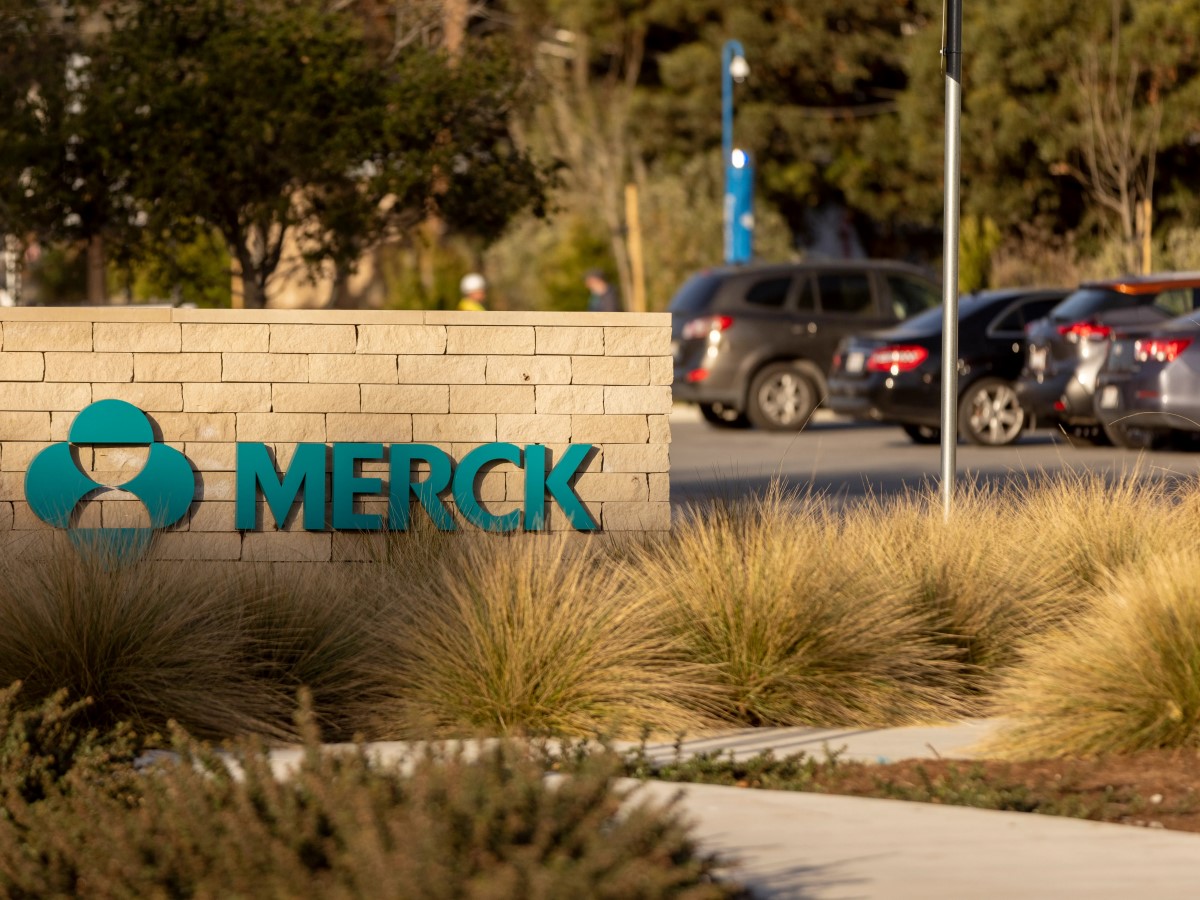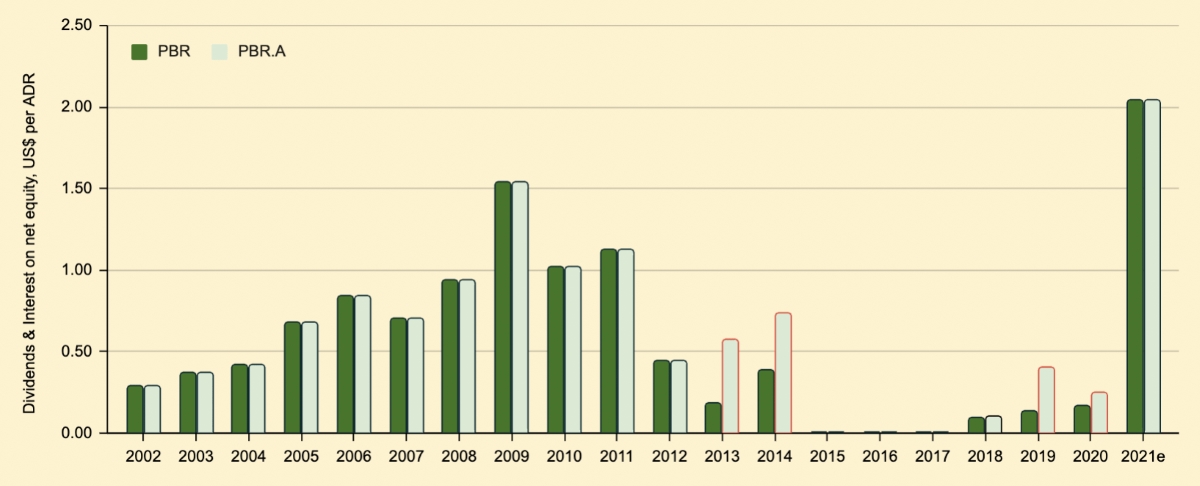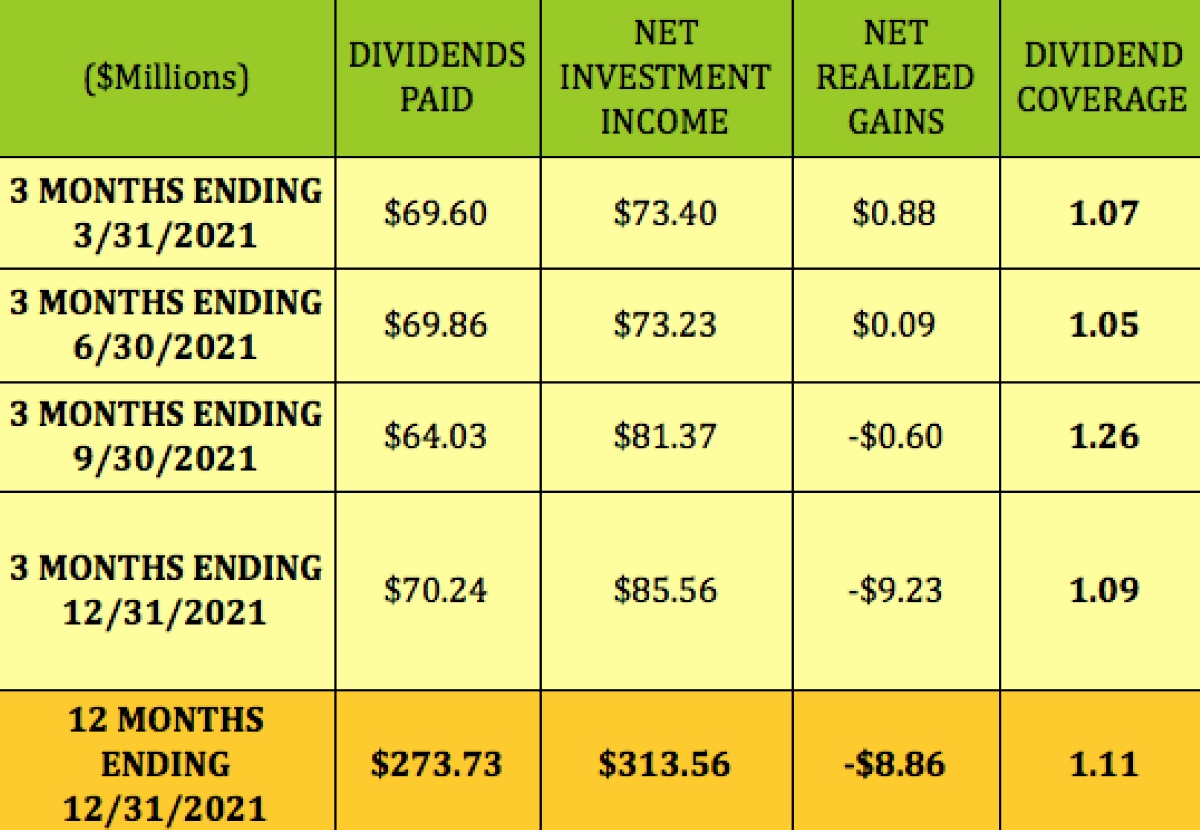

Finance
When Does Merck Pay Dividends
Published: January 3, 2024
Discover when Merck pays dividends and stay updated on the latest financial news in the field of finance. Enhance your investment strategies with our comprehensive information.
(Many of the links in this article redirect to a specific reviewed product. Your purchase of these products through affiliate links helps to generate commission for LiveWell, at no extra cost. Learn more)
Table of Contents
Introduction
Welcome to our comprehensive guide to understanding the dividend payments of Merck & Co., a leading pharmaceutical company. As an investor, it’s important to have a clear understanding of how dividends work and when you can expect to receive them. In this article, we will delve into the topic of Merck’s dividend payments, including its history, factors affecting payments, and the dividend payment schedule.
Merck & Co., commonly known as Merck, is headquartered in Kenilworth, New Jersey. The company is a global leader in the development and production of pharmaceuticals, vaccines, and animal health products. With a rich history spanning over a century, Merck has established a strong reputation for its innovative research and commitment to improving human and animal health worldwide.
Dividends are a portion of a company’s profits that are distributed to shareholders as a reward for their investment. These payments are typically made on a regular basis, and the amount can vary based on factors such as the company’s financial performance and its dividend policy.
Understanding when Merck pays dividends is crucial to investors who rely on this income stream. By analyzing Merck’s dividend history and the factors that influence dividend payments, you can make more informed decisions about your investment strategy.
In the following sections, we will explore Merck’s dividend history, the factors affecting their dividend payments, and the dividend payment schedule. Whether you are a current shareholder or considering investing in Merck, this guide will provide valuable insights into the company’s dividend practices.
Overview of Merck
Merck & Co., also referred to as simply Merck, is a renowned pharmaceutical company that operates globally. The company was founded in 1891 and has since established itself as a leader in the healthcare industry. Merck’s mission is to improve human and animal health through innovative research and development.
With a diverse portfolio of prescription medicines, vaccines, biologic therapies, and animal health products, Merck addresses a wide range of medical needs. The company focuses on areas such as oncology, infectious diseases, cardiovascular health, respiratory health, and more.
Merck’s commitment to scientific excellence and groundbreaking research has led to numerous breakthroughs and advancements in healthcare. The company strongly emphasizes investing in research and development, which enables the discovery and development of new treatments and therapies.
In addition to pharmaceuticals, Merck also operates in the animal health sector. Through its subsidiary, Merck Animal Health, the company provides a comprehensive range of products for the prevention, treatment, and management of diseases in animals.
As a global company, Merck operates in over 140 countries and has a strong market presence. The company collaborates with governments, NGOs, and other stakeholders to improve access to healthcare and address the needs of underserved populations around the world.
Merck is committed to corporate social responsibility and sustainability. The company focuses on reducing its environmental impact, promoting diversity and inclusion, and supporting local communities through various initiatives.
With a proven track record of success, Merck has consistently demonstrated its ability to innovate and adapt to the evolving healthcare landscape. The company’s dedication to improving global health and its strong financial performance make it an attractive investment option for many investors.
Understanding Dividends
Dividends are a distribution of a company’s earnings to its shareholders as a return on their investment. Companies that generate profits have the option to reinvest those profits back into the business or distribute them to shareholders in the form of dividends.
In the case of Merck, the company has a longstanding history of paying dividends to its shareholders. These dividends provide investors with a regular income stream and serve as a way for the company to share its success with its shareholders.
Dividends can be paid in different forms, such as cash or additional shares of stock. Cash dividends are the most common type and are usually paid on a quarterly basis. Some companies also offer dividend reinvestment plans (DRIPs), which allow shareholders to automatically reinvest their dividends to purchase additional shares of the company’s stock.
The amount of dividends paid by a company can vary and is determined by factors such as the company’s profitability, financial health, cash flow, and dividend policy. The dividend policy of a company outlines the guidelines and principles it follows when determining dividend payments.
Dividends are typically expressed in terms of dividend yield, which is calculated by dividing the annual dividend by the company’s stock price. Dividend yield is an important metric for investors as it provides an indication of the income potential of the investment relative to its market value.
Investing in companies that pay dividends can be an attractive option for investors seeking regular income from their investments. Dividend-paying stocks can provide a steady stream of cash flow and are often considered less volatile than non-dividend-paying stocks.
However, it’s important to note that dividends are not guaranteed. Companies have the discretion to change or suspend dividend payments based on their financial performance and strategic priorities. Investors should carefully consider the financial health of a company and its ability to sustain dividend payments before making investment decisions.
In the following sections, we will explore Merck’s dividend history, factors that can affect its dividend payments, and the schedule by which dividends are paid to shareholders.
Merck’s Dividend History
Merck has a strong track record of consistently paying dividends to its shareholders. The company has demonstrated its commitment to providing a return on investment through regular and reliable dividend payments.
Over the years, Merck has increased its dividend payout, reflecting its continued financial success and commitment to shareholder value. The company’s dividend history is a testament to its ability to generate consistent profits and maintain a strong financial position.
Merck’s dividend history can be traced back several decades, with the company consistently increasing its dividend payments. This consistent dividend growth has made Merck an attractive option for income-focused investors looking for stable returns.
In recent years, Merck has specifically adopted a dividend policy that targets a dividend payout ratio of approximately 50% of its earnings. This policy ensures that the company retains a portion of its earnings for reinvestment in research and development and other strategic initiatives.
Investors can review Merck’s dividend history to assess the company’s track record of dividend payments and its commitment to maintaining stable or increasing dividend payouts over time.
It’s worth noting that dividend payments can be affected by various factors, such as changes in the company’s financial performance, industry trends, regulatory environment, and strategic decisions. Investors should consider these factors when evaluating the sustainability and growth potential of Merck’s dividends.
By examining Merck’s dividend history, investors can gain insights into the company’s dividend track record, stability, and potential for future dividend growth. The company’s commitment to consistent dividend payments underscores its commitment to delivering value to its shareholders.
In the following sections, we will explore the factors that can influence Merck’s dividend payments, as well as its dividend payment schedule.
Factors Affecting Merck’s Dividend Payments
Although Merck has a strong history of paying dividends, there are several factors that can influence the company’s dividend payments. It’s important for investors to understand these factors to assess the sustainability and potential growth of Merck’s dividends.
1. Financial Performance: The financial performance of a company is a key determinant of its ability to pay dividends. Merck’s dividend payments are influenced by factors such as revenue growth, profitability, and cash flow generation. A strong financial performance allows the company to allocate a portion of its earnings towards dividend payments.
2. Research and Development Investments: Merck is committed to investing in research and development to fuel innovation and maintain its competitive edge. These investments enable the company to develop new drugs and therapies. However, these investments can impact the amount available for dividend payments, as the company may allocate a significant portion of its earnings towards research and development activities.
3. Industry and Market Conditions: The pharmaceutical industry and broader market conditions can also affect Merck’s dividend payments. Factors such as changes in healthcare regulations, patent expirations, competitive pressures, and market volatility can impact the company’s financial performance and, consequently, its ability to pay dividends.
4. Debt Obligations: Merck’s financial obligations, including debt repayment, may affect dividend payments. The company needs to balance its dividend distribution with its debt obligations to maintain financial stability and creditworthiness.
5. Dividend Policy: Merck’s dividend policy, which outlines the company’s guidelines for determining dividend payments, also affects the amount and frequency of dividends. The company may adjust its dividend policy based on strategic priorities and financial considerations.
Investors should closely monitor these factors to assess the potential impact on Merck’s dividend payments. By understanding the underlying dynamics that influence dividend payments, investors can make informed decisions about their investment in the company.
It’s important to note that while Merck has a strong history of paying dividends, dividend payments are never guaranteed. The company may choose to increase, decrease, or suspend dividend payments based on various internal and external factors.
In the next section, we will explore Merck’s dividend payment schedule to provide investors with an understanding of when they can expect to receive dividend payments.
Merck’s Dividend Payment Schedule
As an investor in Merck, it’s important to be aware of the dividend payment schedule to anticipate when you can expect to receive dividend payments. Merck follows a regular dividend payment schedule, which provides consistency for shareholders.
Merck typically pays dividends on a quarterly basis. This means that dividend payments are made four times a year, with approximately three months between each payment. Quarterly dividend payments allow investors to receive a steady income stream throughout the year.
The specific dates for Merck’s dividend payments can vary from year to year, and it’s essential to refer to the company’s official announcements and financial reports for the most up-to-date information. Generally, Merck announces the ex-dividend date, record date, and payment date for each dividend payment.
The ex-dividend date is the date on which a stock begins trading without the right to receive the upcoming dividend payment. To be eligible for the dividend, investors must purchase the stock prior to the ex-dividend date.
The record date, also known as the books close date, is the date on which the company determines which shareholders are entitled to receive the dividend payment. Investors who are listed as shareholders on the record date will receive the dividend.
The payment date is when the dividend payment is actually distributed to eligible shareholders. It is important to note that there may be a time lag between the record date and the payment date, as it takes time for the company to process and distribute the dividend payments.
It is recommended for investors to regularly check Merck’s investor relations website, financial reports, or consult with their financial advisor to stay updated on the specific dates of dividend payments.
By keeping track of Merck’s dividend payment schedule, investors can plan their cash flow, make informed investment decisions, and potentially take advantage of stock ownership to receive regular dividend income.
It’s worth noting that dividend payments are subject to approval by the company’s Board of Directors and are based on various factors, as mentioned earlier. Therefore, it is important for investors to understand that dividend payments can fluctuate and are not guaranteed.
Now that we have explored Merck’s dividend payment schedule, let’s move on to analyzing Merck’s dividend yield in the next section.
html
Analyzing Merck’s Dividend Yield
Dividend yield is a key metric for investors to assess the income potential of their investment in Merck. It is calculated by dividing the annual dividend per share by the company’s stock price.
A higher dividend yield indicates a higher return on investment in the form of dividend income. However, it’s important to note that a high dividend yield may also reflect a lower stock price or a decline in the company’s financial performance.
Investors often compare the dividend yield of a company to those of its industry peers to get a better understanding of its relative attractiveness. This comparison provides insights into how Merck’s dividend yield stacks up against its competitors.
When analyzing Merck’s dividend yield, it’s crucial to consider the company’s dividend history, financial stability, and industry conditions. A consistent and steadily increasing dividend yield signals a stable and reliable income stream for shareholders.
It’s important to assess Merck’s ability to sustain its dividend payments over the long term. This involves evaluating the company’s financial health, profitability, and cash flow generation. A strong balance sheet and healthy cash flow position are positive indicators that the company can maintain its dividend payments.
Additionally, investors should consider Merck’s dividend policy and any potential changes or adjustments that may impact future dividend payments. The company’s commitment to returning value to shareholders through dividend payments is a key factor in determining the stability and growth potential of its dividend yield.
Investors should also take into account other factors such as the prevailing interest rates and market conditions, which can influence investor preferences and yield expectations. In a low interest rate environment, a higher dividend yield from companies like Merck may be particularly attractive to income-focused investors.
It’s important to note that the dividend yield should not be the sole basis for making investment decisions. Investors should consider the overall investment thesis, company fundamentals, growth prospects, and other relevant factors.
By carefully analyzing Merck’s dividend yield in conjunction with its dividend history, financial health, and industry trends, investors can gain valuable insights to make informed decisions about their investment in the company.
Now, let’s conclude our comprehensive guide to Merck’s dividends.
Conclusion
In conclusion, understanding Merck’s dividend payments is essential for investors who seek a reliable income stream from their investments. Merck, a global pharmaceutical company, has a strong history of consistently paying dividends to its shareholders.
Merck’s commitment to providing a return on investment is evident through its regular dividend payments and its dedication to maintaining a dividend payout ratio of approximately 50% of its earnings.
Factors such as Merck’s financial performance, research and development investments, industry conditions, debt obligations, and dividend policy can affect the company’s dividend payments. Investors should carefully assess these factors to evaluate the sustainability and growth potential of Merck’s dividends.
By adhering to a quarterly dividend payment schedule, Merck provides consistency for shareholders, allowing them to anticipate and plan for their dividend income. It’s important for investors to stay updated on Merck’s announcements and financial reports to know the specific dates of dividend payments.
Analyzing Merck’s dividend yield provides insights into the income potential of investing in the company. Factors such as Merck’s dividend history, financial stability, and industry conditions should be considered when evaluating the attractiveness of its dividend yield relative to its peers.
As with any investment, it’s important for investors to conduct their due diligence, consider their investment objectives and risk tolerance, and consult with financial professionals when making investment decisions related to Merck or any other company.
Overall, Merck’s consistent dividend payments, focus on innovation, and commitment to global health make it an appealing option for investors seeking both income and exposure to the pharmaceutical industry.
We hope this comprehensive guide has provided valuable insights into Merck’s dividend payments, helping investors make informed decisions about their investment in the company.














